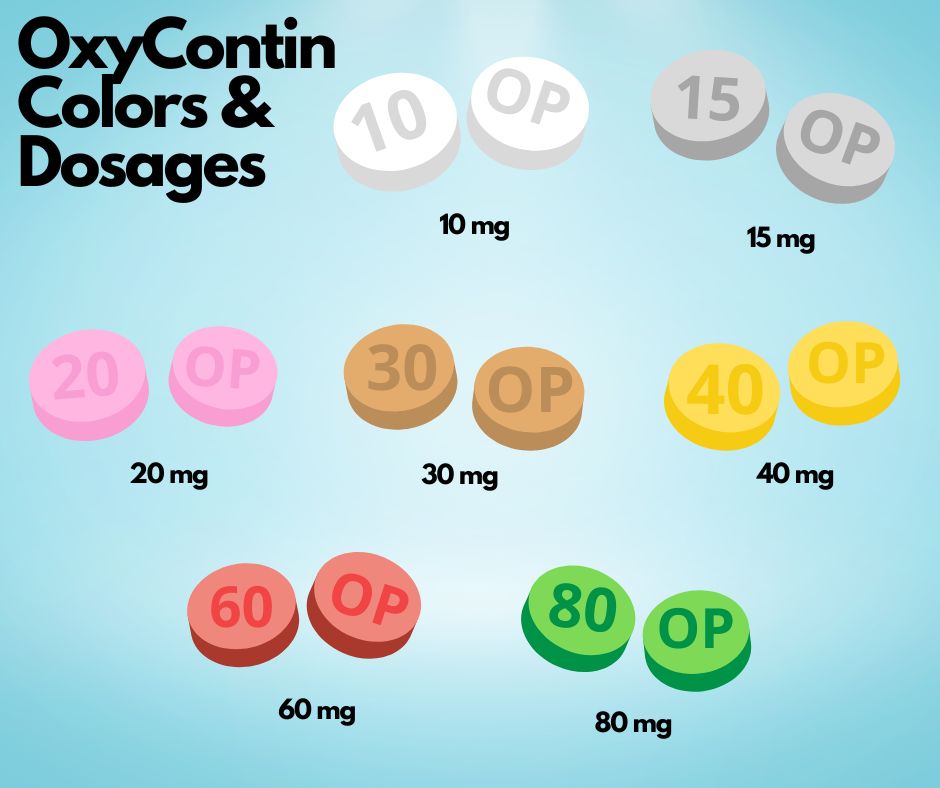In today’s world, where the opioid crisis continues to impact lives and communities, understanding and identifying medications like OxyContin is more important than ever.
OxyContin, a powerful opioid prescribed for severe pain management, has been at the forefront of discussions on prescription drug abuse and opioid addiction. Street names for the drug include Oxy, Hillbilly Heroin, and Blue.
Its potency and potential for dependency make it a drug that requires careful handling and heightened awareness. The ability to identify OxyContin is not only crucial for those prescribed this medication but also for their families, educators, and community members.
Recognizing OxyContin can be the first step in preventing its misuse and addressing the broader challenges of opioid addiction. Demystifying OxyContin includes providing clear and accessible information to help you identify this medication, understand its uses, and recognize the signs that may indicate misuse.
What Is OxyContin?
OxyContin, known generically as oxycodone, is an opioid medication primarily used for the management of moderate to severe pain. This medication is part of the opioid analgesics group, drugs that modify the brain’s pain perception and consequently provide relief.
OxyContin is unique in its formulation, designed to release its active ingredient slowly over time, providing prolonged pain relief. This slow-release property, while beneficial for pain management, also makes it a target for misuse.
One of the key aspects of OxyContin is its potential for dependence and addiction. It’s essential to understand that even when used as prescribed, OxyContin can lead to physical dependence.
This dependency can evolve into addiction, characterized by compulsive drug-seeking behavior and use despite harmful consequences. The risk of OxyContin addiction is higher if the drug is used in a way not prescribed, such as crushing and snorting the pills or using them without a medical need.
Identifying OxyContin
OxyContin comes in various dosages, each indicated by different markings and colors on the pills. These dosages range from 10 mg to 80 mg. This is specifically for the OxyContin brand, as generic versions may differ.
OxyContin pills look like round tablets and are often marked with the letter “OC” or the new formulation mark “OP,” followed by the dosage strength. For example, an OxyContin 80 mg pill should say “OP 80.”
Pictures of OxyContin will show that the color of the pills corresponds to their strength, with lower dosages often being lighter and higher dosages being darker:
- 10 mg pills are white
- 15 mg pills are gray
- 20 mg pills are pink
- 30 mg pills are brown
- 40 mg pills are yellow
- 60 mg pills are red
- 80 mg pills are green
It’s crucial to recognize that there are counterfeit versions of OxyContin in circulation. These fake pills may contain other dangerous substances, including fentanyl, a powerful and potentially deadly opioid.
Therefore, it’s important to obtain OxyContin strictly through a prescription from a licensed healthcare provider and to be vigilant about the drug’s appearance and source.
Risks of Misidentification
Misidentifying OxyContin poses significant risks to both individuals and communities. One of the primary dangers is the potential for accidental overdose.
OxyContin, like other opioids, can depress the respiratory system. If a person unknowingly takes a higher dose than their body can handle, it can lead to respiratory failure and, in severe cases, death. This risk is exacerbated when counterfeit pills are involved. These fake pills often contain inconsistent and dangerously high levels of opioids, like fentanyl, which is much more potent than oxycodone.
Another risk is the possibility of harmful drug interactions. Without proper identification, a person might unknowingly combine OxyContin with other medications or substances that can lead to adverse reactions. For instance, mixing opioids with alcohol or benzodiazepines can significantly increase the risk of respiratory depression, leading to life-threatening situations.
The misidentification can also hinder effective treatment for pain or addiction. If a medical professional or caregiver is unaware that a patient is using OxyContin, they might prescribe a treatment regimen that either doesn’t address the opioid dependence or inadvertently puts the patient at risk of further complications.
Furthermore, the misuse of misidentified OxyContin can accelerate the path to addiction. Individuals may start with what they believe is a low dose or a less potent opioid, not realizing they are consuming OxyContin. This misunderstanding can lead to a quicker onset of tolerance and dependence, escalating to addiction more rapidly than anticipated.
In a broader context, the misidentification and subsequent misuse of OxyContin contribute to the larger opioid crisis. It fuels the cycle of addiction and overdose that affects individuals, families, and communities. Therefore, accurate identification is not just a personal safety issue—it’s a public health imperative.
When to Seek Help

An indicator of when to seek help is a noticeable change in behavior or health. This might include neglecting responsibilities, withdrawing from social activities, or showing signs of physical health decline like weight loss, changes in sleep patterns, or frequent flu-like symptoms. These changes often accompany the misuse of OxyContin and other opioids.
Physical dependence on the drug is another warning sign. Dependence can manifest as withdrawal symptoms when the drug is not taken. These symptoms might include nausea, sweating, agitation, and anxiety. It’s important to understand that dependence can develop even with prescribed use, making it crucial to follow medical guidance closely and seek help if dependency signs emerge.
Help should be sought from professional healthcare providers like those at Lumina Recovery. This includes doctors, addiction specialists, and mental health professionals. They can provide the necessary medical and psychological support, including treatment options like medication-assisted treatment (MAT), counseling, and support groups. These resources are vital for safe withdrawal, treatment of addiction, and long-term recovery.
As of 2024, OxyContin is still available, but there are some important considerations to keep in mind. The U.S. Drug Enforcement Administration (DEA) has been implementing reductions in the supply of various opioids, including oxycodone. These reductions are part of ongoing efforts to manage the risk of diversion, abuse, and overdose associated with these medications.
Navigate Opioid Challenges With Lumina Recovery
Identifying OxyContin is a crucial skill that can aid in preventing misuse and promoting timely intervention. By being informed about OxyContin indications such as appearance and risks, you can play a role in addressing the challenges posed by opioid misuse in your community.
Lumina Recovery has opioid addiction programs as well as medication-assisted treatment (MAT) to help those struggling with addiction.
Contact our team today to learn more about the help we can offer you or your loved ones.

